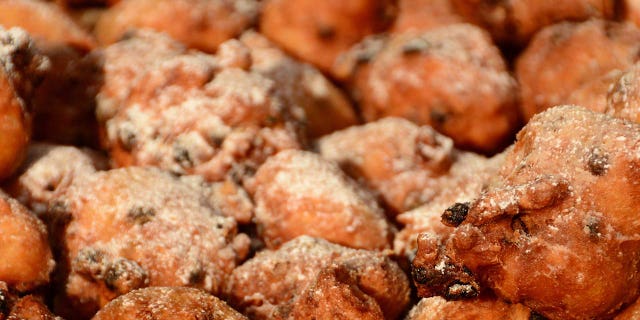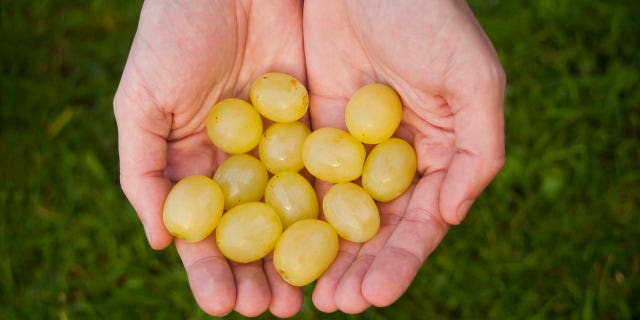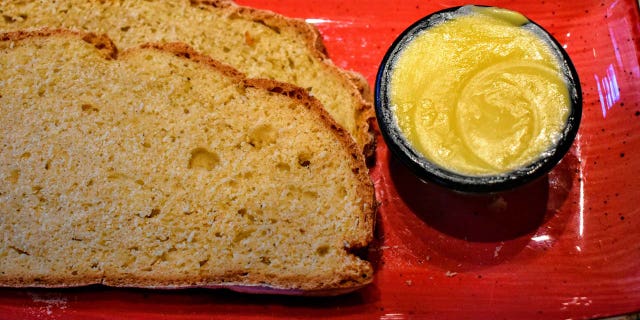For a lot of of us, a standard New Year’s feast is comprised of Champagne and whatever confetti comes about to fall into that Champagne whilst we are drinking it. But for plenty of revelers close to the world, New Year’s is a time to take in symbolic (and potentially extra sizeable) treats.
Cultures from nearly every continent celebrate the New 12 months with their own distinctive foods, quite a few of which are eaten in the hopes of bringing luck, very good wellness or prosperity in the near long term. For illustration, the Japanese slurp prolonged noodles in the hopes of dwelling prolonged life the Italians eat coin-formed lentils as a way to welcome wealth and the Dutch munch on fried dough to ward off the knife-wielding goddess Perchta, lest she slice open their stomachs and their innards spill all about their wonderful New Year’s outfits.
So if you might be on the lookout for a exciting way to ring in the New 12 months that will not likely end result in a pounding headache or confetti in your enamel, attempt 1 of the worldly delights underneath:
The Netherlands: Oliebollen

On New Year’s Eve in the Netherlands, the Dutch usually get ready and try to eat oliebollen, or smaller doughnuts studded with dried raisins or currants. The tradition of feeding on oliebollen (actually “oil balls”) is thought to have originated with early Germanic tribes as a way to ward off the pagan goddess Perchta, who would fly as a result of the skies through Yule and slice open up the bellies of disobedient tribespeople. Anyone who experienced eaten oliebollen, having said that, was spared, as Perchta’s sword would slide off their entire, greasy bellies.
THE Biggest Foodstuff FAILS OF 2021: Teeth-CHOPPED CARROTS AND TOASTED STEAKS
Spain: 12 Grapes

A lot of people sip Champagne to welcome the New Yr, but in Spain (and in some pieces of Latin America) they will be gulping down the grapes them selves. According to NPR, the custom of consuming 12 grapes at midnight began in the 1880s as a way of “copying the French tradition of getting grapes and Champagne on the final working day of the calendar year.” The outlet adds that this customized was in the long run adopted by Madrileños, or inhabitants of Madrid, who would vacation to Puerta del Sol “to see the bells chime at the turning of the 12 months and, most probable in an ironic or mocking manner, eat grapes like the upper course.” Nowadays, this technique nonetheless life on, and citizens can even purchase their 12 grapes in modest tins, previously seeded and peeled. (It is really also often stated that the grapes ought to be eaten inside the initial 12 seconds of the New Yr to welcome 12 lucky months.)
Italy: Cotechino con Lenticchie

Italians know a issue or two about preparing a feast, so it only will make feeling that they’d whip up a mouthwatering cotechino con lenticchie for New Year’s. This common stew is produced with pork and lentils, which have been explained as “two of Italy’s culinary symbols of great luck.” For instance, some Italians think that pigs, who press their snouts ahead alongside the way relatively than backward, are symbolic of development. As for lentils, they are currently shaped like miniature coins, symbolizing fortune. Thus, consuming this hearty dish on New Year’s is reported to make sure a affluent 12 months.
Click on Here TO Signal UP FOR OUR Lifestyle Publication
Berlin: Berliner Pfannkuchen

In Berlin, unique varieties of jelly doughnuts acknowledged as a Berliner Pfannkuchen are acquired at local bakeries on December 31st and liked later on in the night. In accordance to The New York Periods, some folks even try to eat these fluffy treats “to nurse [a] hangover the future working day.” And even though the Berliner Pfannkuchen is usually loaded with a fruit jam, like plum, apricot, or raspberry, be warned: Heritage.com studies that it’s “a frequent realistic joke to fill some with mustard instead of jelly to trick unsuspecting attendees.”
Greece: Vasilopita

When it will come to celebrating New Year’s Eve like the Greeks, vasilopita is the dessert you should really have on the table. Greek-American nutritionist Elena Paravantes describes this dish as a moist cake made with conventional components like sugar, milk, eggs, and even orange and orange zest, though it can also be created with yeast for a “a lot more bread-like” regularity. “Vasilopita is the Greek lucky New
Year’s cake that has a coin hidden in it and is cut at midnight,” points out Paravantes. “A piece is lower for just about every family member. If the coin is in your piece, you supposedly have fantastic luck for the rest of the yr.” Several vasilopitas are adorned with the date of the New Year, but they can also be topped with sliced almonds or a basic dusting of powdered sugar.
Japan: Toshikoshi Soba

On New Year’s Eve, the Japanese savor a bowl of hearty soba noodles recognized as toshikoshi soba, or “12 months-passing” noodles. “The buckwheat noodles are extended than typical mainly because the soba symbolizes longevity,” reports The Chicago Tribune. “According to some historians, soba is intended to signify strength and resiliency, since the buckwheat plant itself bounces back even just after getting flattened by wind and rain,” provides The Japan Times, which also notes that the lengthy noodles “may perhaps signify the [eater’s] would like for a extensive lifetime.” (And if they’re emotion superstitious, some diners prevent chopping the noodles even though taking in to make sure lasting luck. In other words and phrases, start slurping!)
Follow US ON Fb FOR Far more FOX Lifestyle Information
The American South: Black-Eyed Peas, Hoppin’ John

It truly is widespread to see black-eyed peas on the New Year’s table in numerous parts of the American South, often served along with cooked greens, or as an component in Hoppin’ John (a Carolina dish of rice, peas and bits of pork). The theories driving these dishes differ, but in accordance to cookbook author and New York Times contributor Jessica B. Harris, the African slaves en route to The us survived on black-eyed peas, and later on planted the hardy crops on arriving, so “acquiring some extra on hand at the New Calendar year certain sustenance offered by a new crop.” Another theory suggests that black-eyed peas came to be arrived to be deemed fortunate someday right after the Civil War, when Union soldiers ate the rest of the Southern crops but dismissed the peas, allowing the locals to sustain by themselves.
Ireland: Buttered Bread (and Banging Bread)

Click on In this article TO GET THE FOX News App
In accordance to historians, Irish households would sometimes depart buttered bread (or bread and butter sandwiches) on their doorsteps on New Year’s Eve for nearby kids to come and gather. In reality, the getaway is at times termed “The Working day of the Buttered Bread” in Gaelic. An additional custom reportedly involves banging a stale loaf of “Xmas bread” towards the doorways and partitions of the property to scare absent any negative spirits.